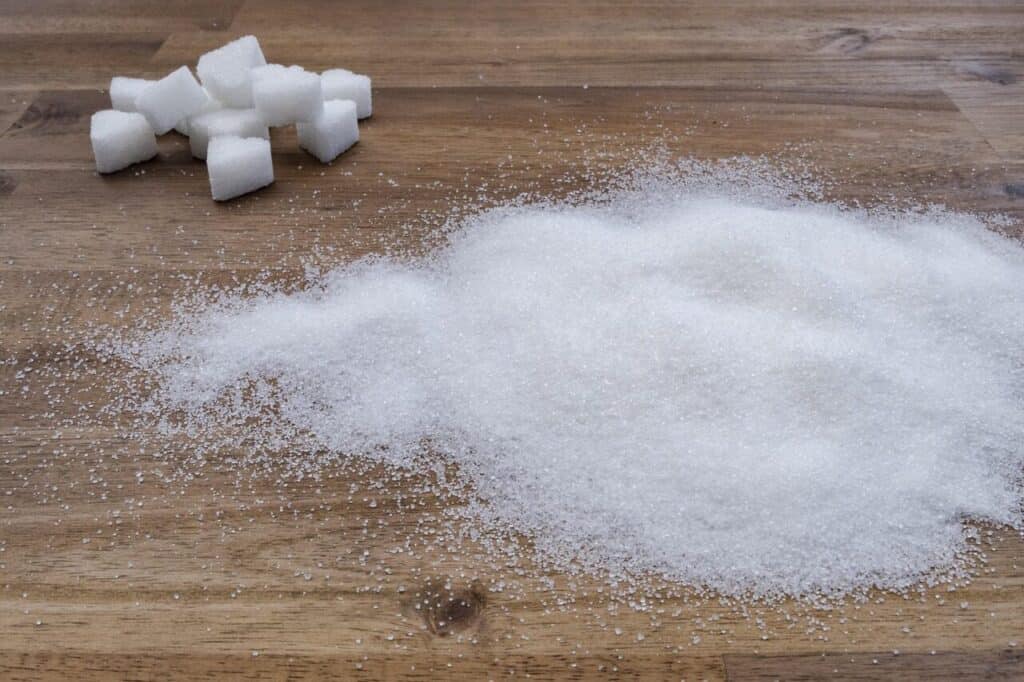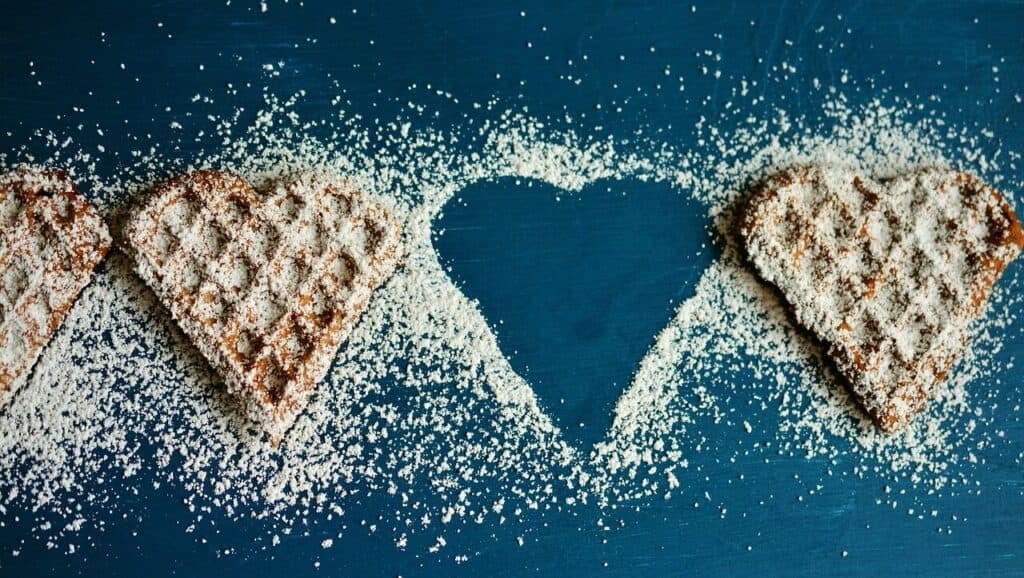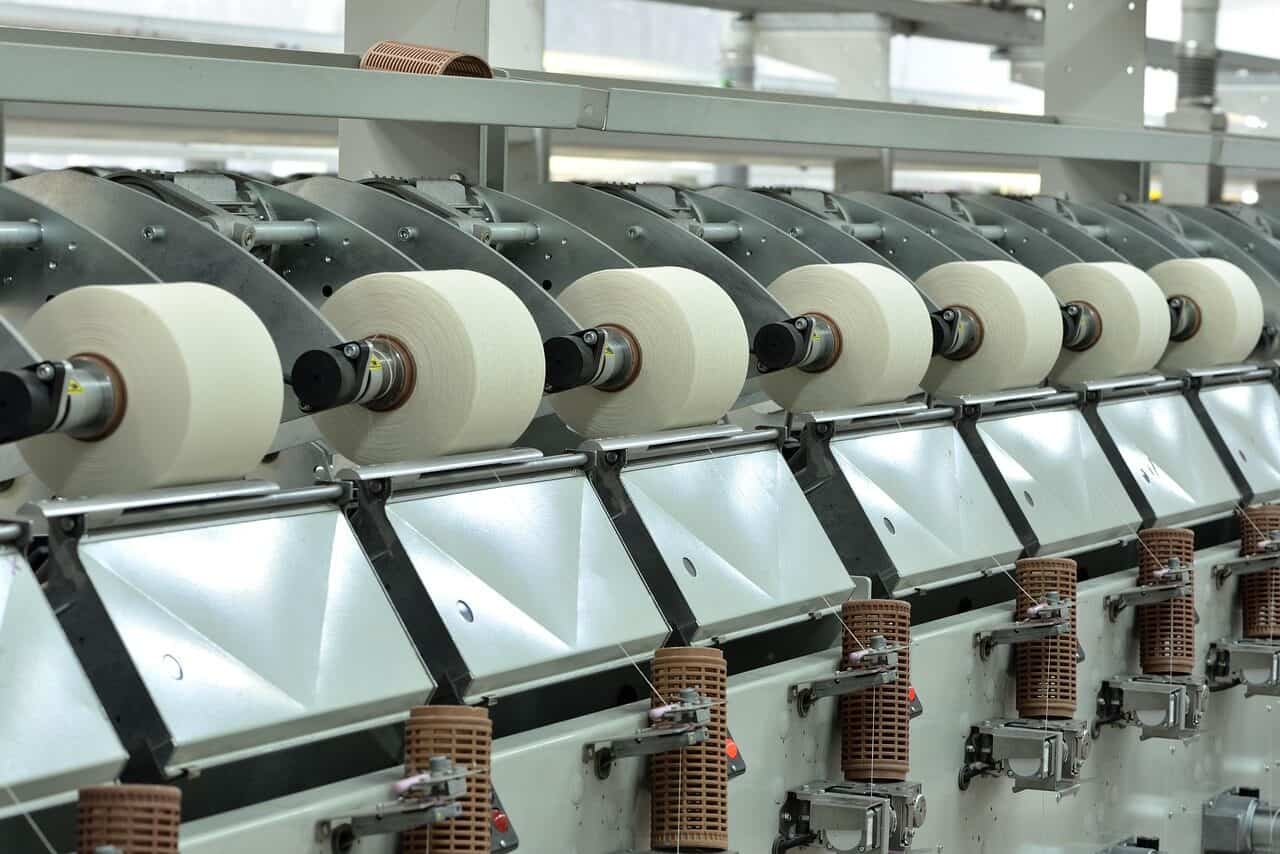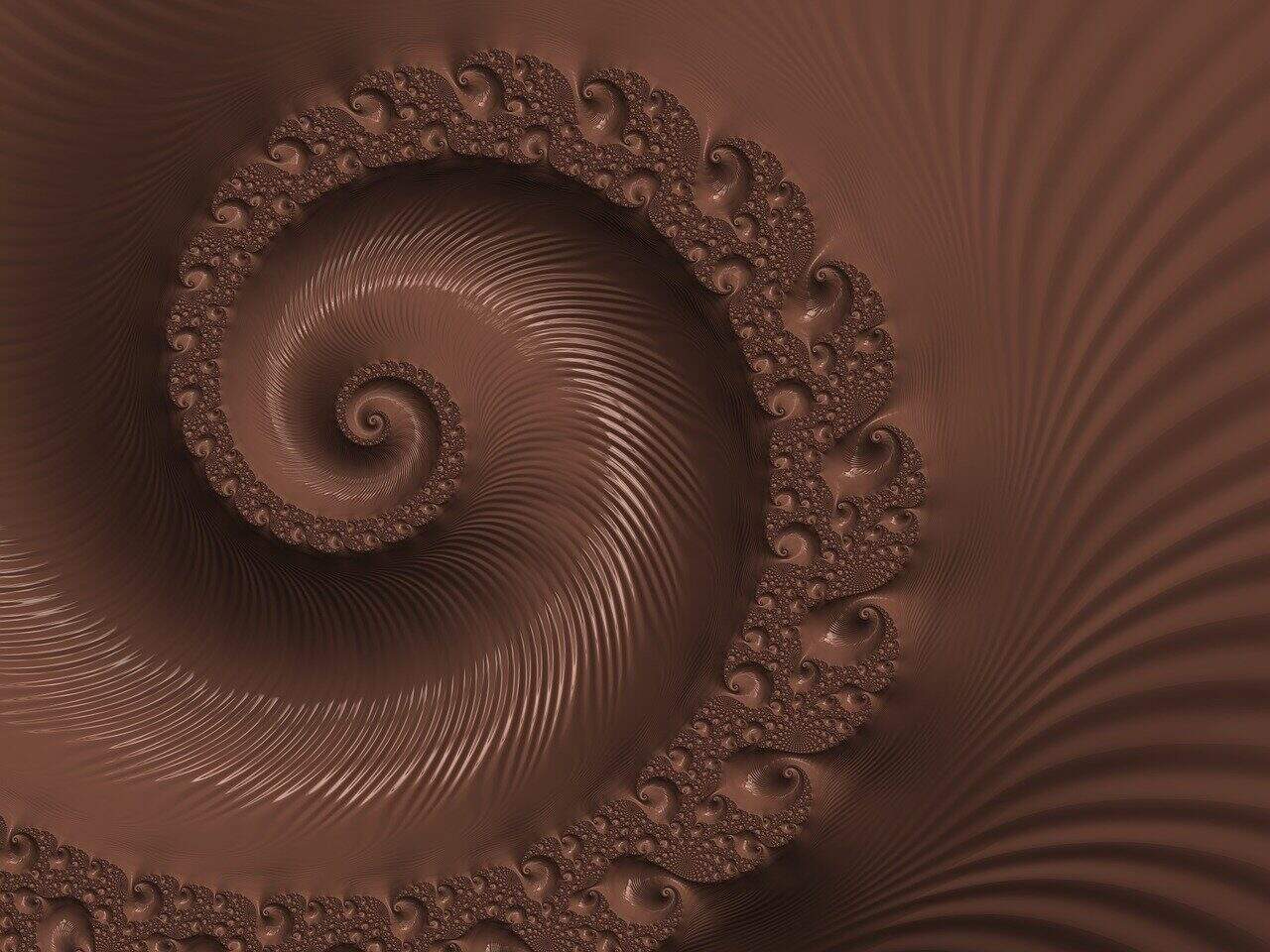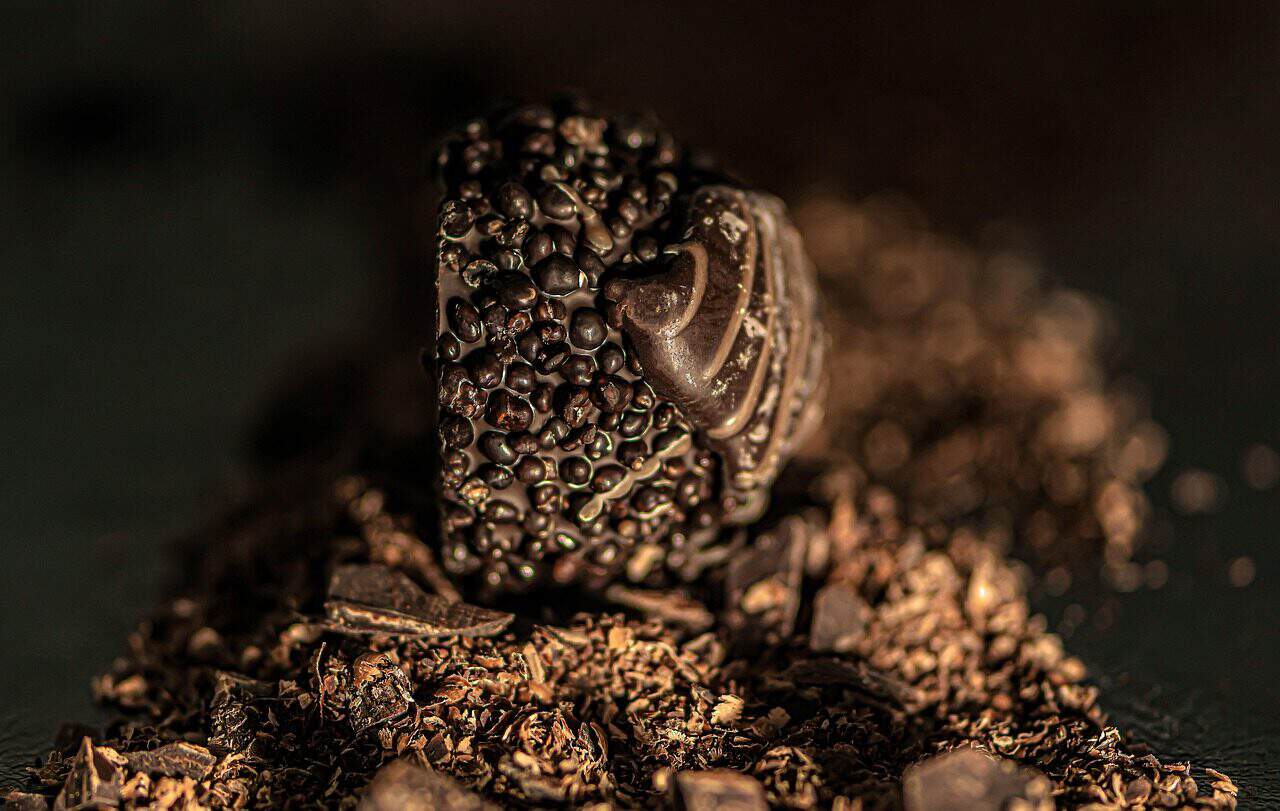Наука сладости: Технический анализ плавления и карамелизации сахара
Введение
Превращение простых кристаллов сахара в жидкий янтарь - один из основных кулинарных навыков. Это выглядит просто, но на самом деле этот процесс - один из самых сложных и интересных в науке о пище. Когда вы понимаете, что происходит с сахаром, когда он плавится, вам становится понятна целая цепочка физических изменений и химических реакций.
Это не похоже на таяние льда в воде. Для сахарозы - обычного столового сахара - этот процесс представляет собой сложный танец плавления и распада одновременно. Это путешествие, в ходе которого одно сладкое соединение превращается в сотни новых молекул. Каждая из них добавляется в сложную
сочетание вкусов, Запах и цвет.
В этой статье вы найдете полное техническое описание процесса плавления сахара. Мы рассмотрим важную разницу между настоящим плавлением и термическим разрушением. Мы рассмотрим, как ведут себя различные виды сахара. И мы глубоко погрузимся в химию карамелизации. Наша цель - выйти за рамки рецептов и дать вам научные знания, позволяющие контролировать, изменять и
совершенствуйте искусство работы с сахаром.
Физико-химическая перспектива
Чтобы овладеть сахарозой, нам нужно определить наши термины с научной точностью. Обычно люди используют слово “плавление”, но в случае с сахарозой все гораздо сложнее. В этом разделе вы узнаете основы науки, необходимые для понимания всего процесса.
Плавление и разложение
Настоящее плавление - это когда что-то переходит из твердого состояния в жидкое без изменения химического состава. Лед (твердое вещество H₂O), тающий в воде (жидкое вещество H₂O), - прекрасный пример. Этот процесс можно обратить вспять - вода может замерзнуть и превратиться обратно в лед.
Термическое разложение - это совсем другое. Это необратимое химическое изменение. Когда вы нагреваете древесину, она не плавится, а горит. Она распадается на пепел, дым и газы. Ее химическая структура постоянно меняется.
Плавление сахара находится где-то между этими двумя определениями. Оно включает в себя физическое изменение, но за ним сразу же следует химический распад. Это делает его необратимым.
Случай с сахарозой
Сукроза - двухкомпонентный сахар, который мы знаем как столовый сахар, - технически начинает разрушаться, когда достигает температуры плавления. Это очень важно для всех, кто работает с сахаром. Тепловая энергия не только разрушает связи между молекулами сахара (плавление). Она также начинает разрушать связи внутри самих молекул сахарозы.
Чистая сахароза плавится при температуре около 186°C (367°F). Но это часто указывается в качестве диапазона, потому что распад начинается до того, как вы получите прозрачную жидкость. Этот одновременный распад - первый шаг к карамелизации. Это объясняет, почему “расплавленный” сахар никогда не может быть охлажден обратно в свою первоначальную кристаллическую форму.
Сравнительный анализ сахара
Все сахара не одинаковы. Они ведут себя по-разному при нагревании в зависимости от своей химической структуры. Профессионалы должны понимать эти различия, чтобы выбрать правильный сахар для конкретной работы - будь то прозрачная сахарная скульптура или быстро подрумянивающийся соус.
Мы сравним самые распространенные
сахара, используемые в кулинарии и изготовление конфет. Сначала мы классифицируем их по структуре. Дисахариды, например сахароза, состоят из двух более простых сахаров. Моносахариды, такие как глюкоза и фруктоза, представляют собой одноцепочечные сахара. Это структурное различие определяет, как они плавятся и карамелизуются.
Сукроза (столовый сахар)
Сукроза является промышленным стандартом. Это двухкомпонентный сахар, состоящий из одной глюкозы и одной фруктозы, соединенных вместе, и при его плавлении происходит распад, о котором мы уже говорили. Она склонна к кристаллизации, но образует классическую янтарную карамель, которая задает стандарт вкуса и цвета.
Глюкоза (декстроза)
Глюкоза ведет себя по-другому. Это однокомпонентный сахар с более низкой температурой плавления, чем сахароза. Она плавится более чисто, прежде чем произойдет значительное подрумянивание. Главная ценность глюкозы в производстве конфет - ее мощная способность препятствовать кристаллизации сахарозы, что делает ее незаменимым “интерферирующим агентом”.”
Фруктоза (фруктовый сахар)
Фруктоза - еще один однокомпонентный сахар с самой низкой температурой плавления из всех распространенных сахаров. Она очень реактивна и быстро карамелизуется при гораздо более низких температурах, чем сахароза. Это делает ее идеальным вариантом, когда требуется быстрое подрумянивание, но при этом она требует тщательного контроля температуры, чтобы не допустить подгорания.
Лактоза (молочный сахар)
Лактоза - это двухкомпонентный сахар, содержащийся в молоке. Она имеет высокую температуру плавления и менее сладкая, чем сахароза. Ее карамелизация является ключевым фактором развития вкуса в таких продуктах, как дульсе де лече, где она медленно подрумянивается в процессе длительного приготовления в присутствии молочных белков.
Таблица 1: Сравнительные свойства распространенных сахаров
Тип сахара | Химический класс | Приблизительная температура плавления (°C / °F) | Поведение при плавлении и карамелизации | Общие приложения |
Сахароза | Дисахарид | 186°C / 367°F | Разлагается при плавлении, образуя классическую янтарную карамель. Склонна к кристаллизации. | Карамель общего назначения, конфеты, соусы. |
Глюкоза | Моносахарид | 146°C / 295°F | Плавится более чисто, до значительного подрумянивания; менее подвержен кристаллизации. | Кукурузный сироп, используемый в кондитерских изделиях, препятствует кристаллизации. |
Фруктоза | Моносахарид | 103°C / 217°F | Плавится и карамелизуется при более низкой температуре; очень быстро подрумянивается. | Препараты на основе фруктов, некоторые специальные сиропы. |
Изомальт | Сахарный спирт | 145-150°C / 293-302°F | Плавится до состояния очень прозрачной жидкости; очень устойчив к кристаллизации и влажности. | Сахарные скульптуры, декоративные работы, конфеты “без сахара”. |
Химия карамелизации
Карамелизация - это не одна реакция, а сложная цепь химических событий. Это термическое расщепление сахара в отсутствие белков. В результате этого процесса образуются сотни новых соединений, которые придают карамели характерный цвет, вкус и запах.
Каскад реакций
Путь от одной молекулы сахара до сложной карамели проходит через четыре ключевых этапа химических реакций при повышении температуры.
Инверсия сахарозы: Первая реакция, в которой часто участвуют следовые количества воды или кислоты, разрывает связь в сахарозе. В результате двухкомпонентный сахар распадается на части: глюкозу и фруктозу.
Конденсация и дегидратация: При нагревании молекулы воды удаляются из структуры сахара. Затем сахара начинают конденсироваться, отдельные молекулы соединяются друг с другом, образуя более крупные и сложные сахара.
Изомеризация и фрагментация: Сахарные кольца (например, глюкозы и фруктозы) раскрываются и перестраивают свои атомные структуры в различные формы. В то же время эти нестабильные структуры начинают распадаться на более мелкие, высокореактивные и летучие соединения. Это критический этап, на котором возникают первые ароматы.
Полимеризация: Наконец, мелкие фрагменты и другие реактивные молекулы соединяются вместе, образуя очень крупные молекулы. Существует три основные группы: бесцветные карамелины, карамелины коричневого цвета и карамелины насыщенного темного цвета, часто горькие. Эти крупные молекулы отвечают за глубокий цвет и густоту карамели.
Генезис вкуса и аромата
Чувственный опыт приготовления карамели позволяет непосредственно наблюдать за ее химическим составом. Когда температура поднимается выше 170°C, мы видим первые ароматические изменения. Первоначальная простая сладость уступает место маслянистым и ореховым ноткам благодаря таким соединениям, как диацетил.
При дальнейшем повышении температуры появляется более глубокий и сложный букет. Насыщенный тостыми и даже слегка горьковатыми нотками, он свидетельствует об образовании фурановых соединений, таких как гидроксиметилфурфурол (HMF) и мальтол. Мальтол, в частности, создает тот самый характерный “карамельный” или тостовый вкусовой профиль.
Карамелизация против Майяра
Очень важно отличать карамелизацию от реакции Майяра. Обе реакции являются реакциями подрумянивания, которые приводят к сложным вкусовым ощущениям, но требования к ним принципиально разные.
Карамелизация - это термическое расщепление одних только углеводов. Это может произойти только при наличии сахара и тепла.
Для реакции Майяра необходимы восстанавливающий сахар и аминокислота (из белка). Она отвечает за подрумянивание хлебной корочки, стейка и жареного кофе. Хотя эти реакции могут происходить одновременно в продуктах, содержащих и сахар, и белок (например, в молочных карамельках), они представляют собой разные химические пути.
Таблица 2: Этапы карамелизации сахарозы
Название этапа | Диапазон температур (°C / °F) | Визуальные и текстурные подсказки | Ключевые ароматические соединения и вкусовой профиль |
Прозрачная жидкость | 160-165 °C / 320-330 °F | Сахар полностью расплавлен, прозрачен и текуч. | Нейтральный, чисто сладкий. |
Светло-соломенный / блондинка | 166-170°C / 331-338°F | Появляется первый намек на бледно-желтый цвет. | Начальные маслянистые, слегка фруктовые ноты (диацетил, эстеры). |
Средний янтарь | 171-177°C / 340-350°F | Появляется прозрачный, насыщенный янтарный/медный цвет. | Насыщенная карамель, ореховые, тостовые ноты (мальтол, фураны). Классический карамельный вкус. |
Темный янтарь | 178-185°C / 352-365°F | Глубокий коричневый цвет, сироп начинает густеть и слегка дымиться. | Появляются глубокие, более сложные, слегка горьковатые ноты. |
Черный / жженый | >190°C / >375°F | Непрозрачный, темно-черный и сильно дымящийся. Вязкость уменьшается, затем загустевает до твердого вещества. | Едкий, горький, карбонизированный. Невкусный. |
Контроль над процессом
Понимание науки о плавлении и карамелизации сахара - ключ к овладению ею. Контролируя ключевые переменные, вы можете направлять реакцию к желаемому результату. Вы сможете добиться стабильных результатов в любой области применения - от нежного соуса до твердых конфет.
Температура и скорость нагрева
Температура - самая важная переменная. Контроль над температурой - это контроль над конечным продуктом. Надежный термометр для конфет - это не совет, а необходимое научное оборудование.
Медленный нагрев очень важен для контроля. Он способствует равномерному плавлению всей массы сахара, предотвращая образование горячих точек, в которых сахар может сгореть до того, как расплавится остальная часть. Это позволяет наблюдать за изменениями цвета и аромата и прекращать приготовление в нужный момент.
Быстрый нагрев резко повышает риск неудачи. Это может привести к тому, что сахар на дне кастрюли сгорит раньше, чем сахар сверху станет жидким. В результате продукт получается неравномерным и горьким.
Влияние воды
Выбор между “мокрым” и “сухим” способом карамели существенно влияет на контроль и конечную текстуру.
Сухой метод предполагает нагревание кристаллов сахара непосредственно на сковороде. Это быстрее, поскольку не нужно испарять воду. Однако при этом гораздо выше риск неравномерного нагрева, ожогов и преждевременной кристаллизации. Он требует постоянного внимания.
Мокрый метод предполагает растворение сахара в воде перед нагреванием. Этот процесс более медленный, так как вся вода должна выкипеть, прежде чем температура сахара поднимется выше 100°C (212°F) и начнется карамелизация. Преимуществом является превосходный контроль. Сахарный раствор нагревается равномерно, что значительно снижает риск ожогов и дает больше возможностей для ошибок.
Влияние добавок
Добавки - это не просто ароматизаторы, это химические агенты, контролирующие процесс карамелизации. Понимание их функций позволяет точно контролировать текстуру и стабильность.
Кислоты, такие как несколько капель лимонного сока или небольшое количество винного камня, являются сильными мешающими агентами. Они способствуют инверсии сахарозы - расщеплению сахарозы на глюкозу и фруктозу - в начале приготовления. Полученная смесь из трех различных сахаров имеет гораздо меньшую склонность к кристаллизации, чем сахароза. Это приводит к получению более гладкого и стабильного сиропа.
Основания, такие как пищевая сода, обладают драматическими эффектами. При добавлении в горячую кислую карамель пищевая сода разлагается и выделяет углекислый газ. Именно эта реакция лежит в основе сотовых или золушечных ирисок, когда газ создает легкую, воздушную и хрупкую пенную структуру, а карамель быстро остывает и затвердевает.
Жиры, такие как сливочное масло и сливки, добавляются для создания классического
карамельные соусы и мягкие карамели. Они служат сразу нескольким целям: обогащают вкус и создают гладкую консистенцию. Благодаря высокому содержанию воды и низкой температуре они мгновенно останавливают процесс приготовления, быстро снижая температуру сахара и предотвращая его подгорание.
Руководство по устранению технических неполадок
Даже при твердом знании теории при работе с сахаром неизбежны практические трудности. Высокие температуры и быстрые химические изменения создают процесс, в котором мало места для ошибок. Этот раздел служит диагностическим инструментом, выявляя общие проблемы, объясняя их научные причины и предлагая эффективные решения.
Таблица 3: Руководство по устранению неисправностей при плавлении и карамелизации сахара
Проблема | Научная причина (причины) | Предотвращение и решение |
Нежелательная кристаллизация | - Агитация, вводящая “затравочные” кристаллы.<br>- Загрязнения (пыль, нерастворенный сахар) на сковороде.<br>- Природная склонность сахарозы к реформированию кристаллической решетки. | - Используйте “мокрый метод”, чтобы гарантировать, что весь сахар растворяется.<br>- Добавьте мешающий агент, например, кукурузный сироп или кислоту (лимонный сок).<br>- Не перемешивайте, а слегка вращайте сковороду.<br>- Используйте чистую кондитерскую кисть, смоченную водой, чтобы смыть кристаллы со стенок сковороды. |
Жженый, горький вкус | - Температура превысила идеальный диапазон карамелизации (~185°C / 365°F).<br>- Образование горьких на вкус полимеров и углерода. | - Используйте надежный термометр для конфет.<br>- Для равномерного распределения тепла используйте сковороду с толстым дном.<br>- Обращайте пристальное внимание на визуальные и ароматические подсказки.<br>- Чтобы остановить приготовление, погрузите дно кастрюли в ледяную баню или добавьте жидкость, например, сливки (если это предусмотрено рецептом). |
Неравномерное плавление / обжигание | - Неравномерное распределение тепла от сковороды или конфорки.<br>- Горячие точки в сахарной массе. | - Используйте высококачественную кастрюлю с толстым дном и светлым цветом.<br>- Медленно и равномерно нагрейте сахар.<br>- Осторожно вращайте сковороду, чтобы перераспределить растаявший сахар. Не перемешивайте сухую карамель. |
Карамель слишком твердая / слишком мягкая | - Конечная температура приготовления была неправильной для желаемого применения (более высокая температура = более твердый набор).<br>- Неправильное соотношение сахара и жидкости. | - Используйте термометр для конфет, чтобы точно определить температуру для вашей цели (например, мягкий шарик, твердый треск).<br>- Понимание температурных стадий и соответствующих им текстур при охлаждении.<br>- Если они слишком твердые, можно слегка подогреть в небольшом количестве воды, чтобы они растворились и приготовились заново. |
Заключение
Мы прошли путь от базовой физики фазового перехода до сложной химической симфонии карамелизации. Мы увидели, что плавление сахара - это не простое событие, а ворота в мир сложных реакций, которые мы можем наблюдать, понимать и, что самое главное, контролировать.
Различая истинное плавление и разложение, анализируя уникальные свойства различных сахаров и составляя карту стадий карамелизации, мы получаем глубокое управление нашим средством. Добавление мешающих агентов и точное управление температурой - это уже не просто шаги по рецепту, а целенаправленное химическое вмешательство.
Эти технические знания возвышают ремесло. Они превращают повара или шеф-повара из человека, который следует инструкциям, в настоящего новатора. В человека, способного устранять проблемы, адаптировать техники и творить с умыслом и точностью. Мастерство работы с сахаром начинается не с руки, а с понимания его науки.

